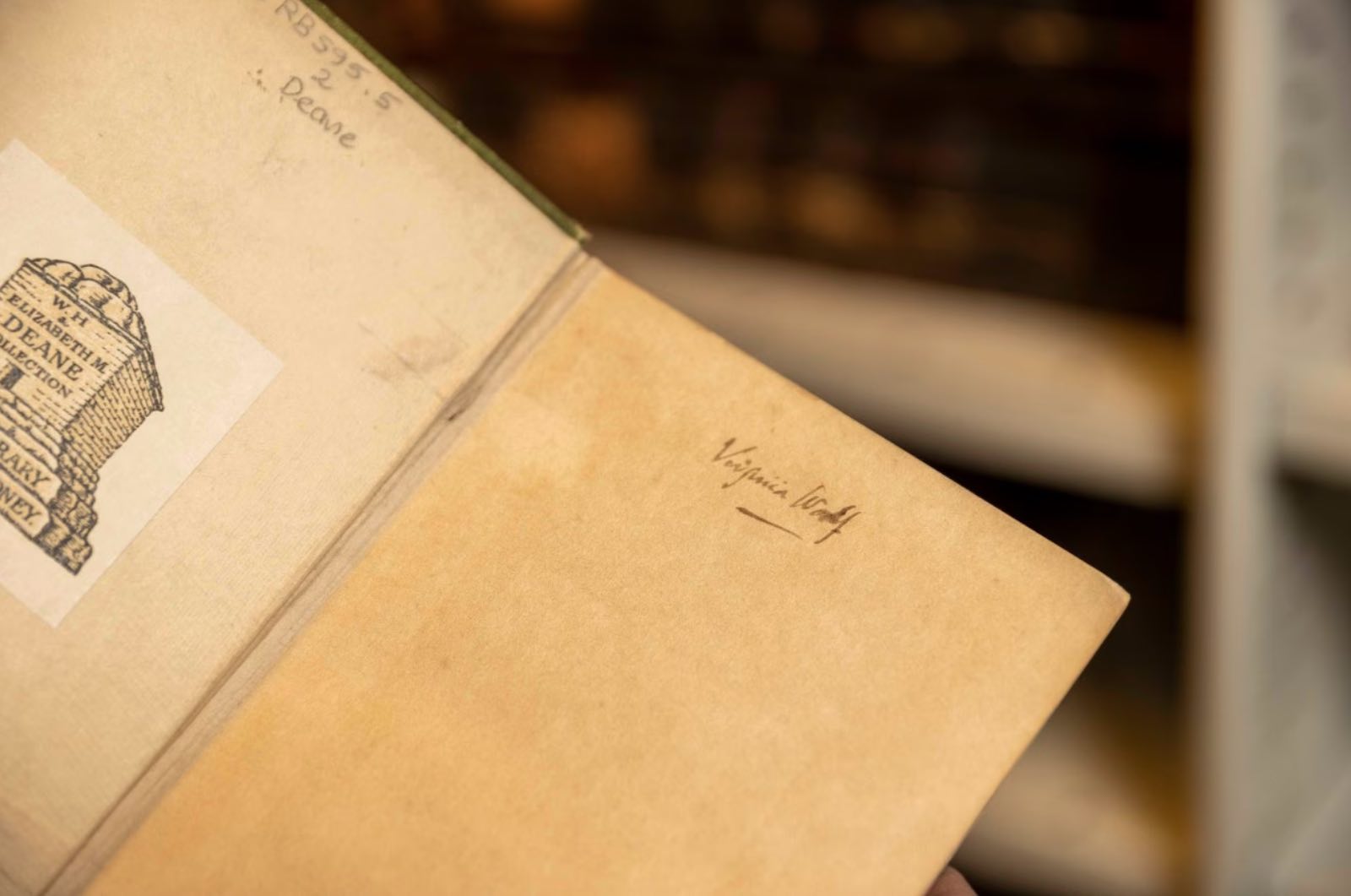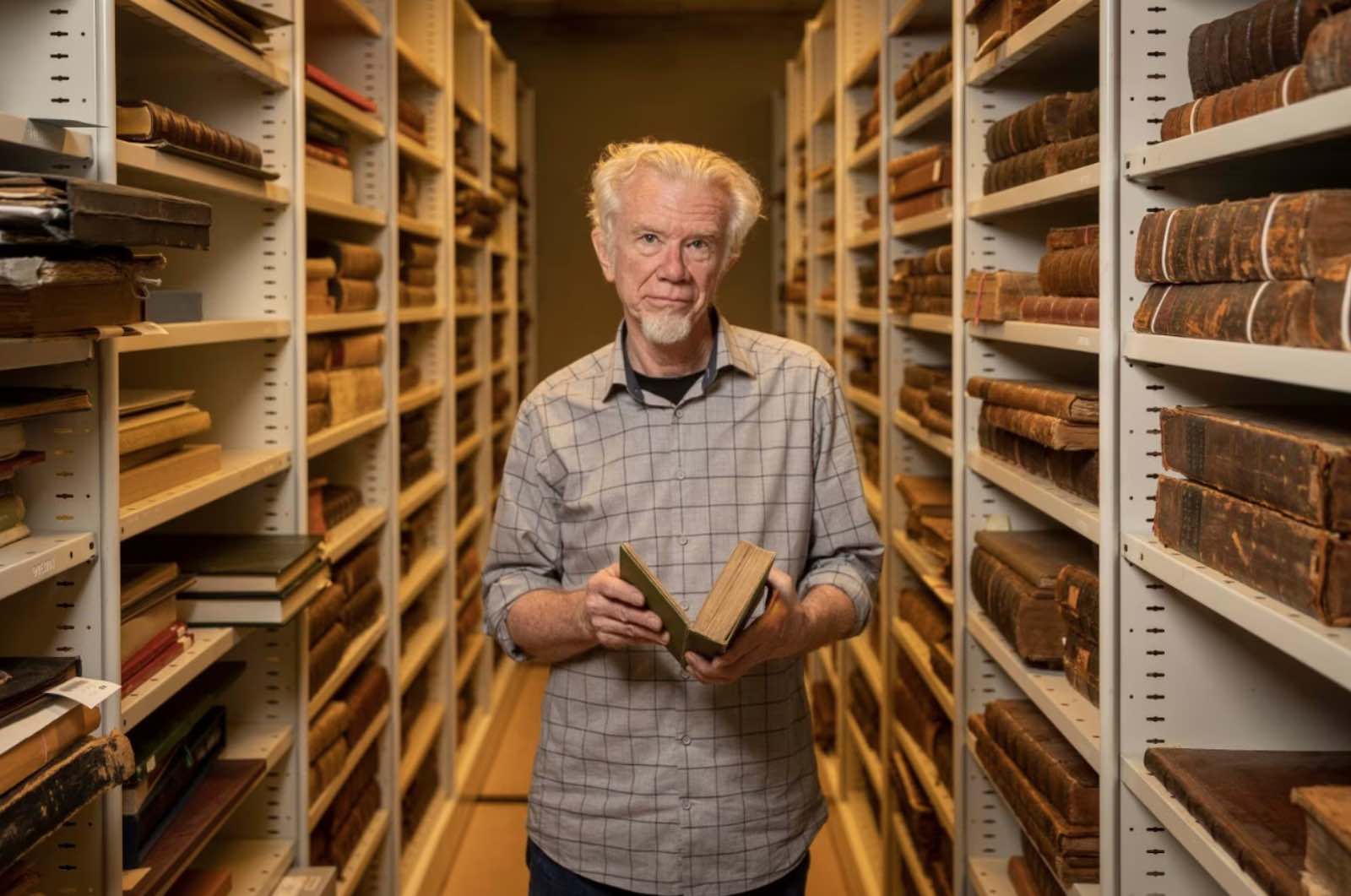Inside the book, in handwritten and typed adjustments, are edits made by Woolf in blue pencil, brown pencil (potentially from an editor), and typed excerpts pasted onto the pages. While some modifications are grammatical and partial edits, others are more robust including removing paragraphs and sentences. In Chapter 25, whole pages are boldly struck out with handwritten revisions, which were ultimately not followed through.
Mr Cooper considers the book a remarkable find, with the adopted and abandoned revisions providing an insight into Woolf’s interior thoughts. "The pasted-in typed notes were ultimately adopted in the US print edition, but the handwritten ones weren't. One theory is that this was Virginia’s personal copy, with a second marked-up copy sent to the American publisher for publication. The inscriptions are what makes our copy unique, and the revisions are fascinating in terms of what Woolf was thinking at the time."
Professor of Modern Literature Mark Byron from the Faculty of Arts and Social Sciences explained the copy speaks to Woolf's turbulent process of writing the book and is a beguiling artefact within the literary sphere.
"This copy carries the aura of the author's hand and her immediate interventions in the text. It carries iconic value," he said. "This copy carries the aura of the author's hand and her immediate interventions in the text. It carries iconic value. Woolf appears to be very carefully calibrating how the narrator is reporting the characters' thoughts - an indication she's taking great care with revealing the character's thoughts but also developing the role of the narrator.
"It's really the characters' psychology and how much of that the narrator reveals. That may be the key feature. It's also about Woolf's understanding of her own process of writing. It forms a part of a big constellation. Because it's at the start of her career and it's her first novel, this copy could be an important agenda-setting text, in terms of speaking more fully about how Woolf developed her craft."




















